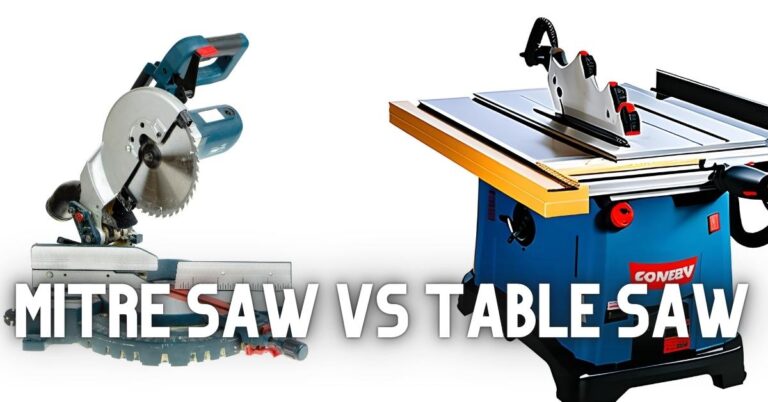Jig Saw vs Multi-Tool: Which Power Tool Reigns Supreme for DIY Projects?
Regarding versatile power tools, jigsaws and multi-tools are famous for DIY enthusiasts and professionals. These handheld devices offer unique capabilities for cutting, shaping, and refinishing various materials. Jigsaws excel at making curved and straight cuts in wood, plastic, and metal while oscillating multi-tools are designed for precision work in tight spaces and specialized tasks like sanding, scraping, and grout removal.
Both tools have their strengths and ideal applications. Jigsaws are go-to options for projects requiring intricate cuts or working with larger sheets of material. Conversely, multi-tools shine in situations where access is limited or multiple functions are needed without switching tools.
Understanding the differences between jigsaws and multi-tools helps users choose the right tool for specific jobs. Factors such as project requirements, material types, and workspace constraints all play a role in determining which tool will be most effective. By examining the capabilities of each, DIYers and professionals can make informed decisions to enhance their toolkit and improve project outcomes.
Comparing Functionality
Jigsaws and multi-tools offer distinct cutting capabilities suited for various materials and applications. Their functionality differs in precision, versatility, and the projects they excel at.
Versatile Cutting Capabilities
Jigsaws excel at making curved and straight cuts in wood, plywood, and thin metal sheets. They can create intricate shapes and patterns with ease. Jigsaws are ideal for cutting circles, curves, and irregular shapes in cabinetry and furniture making.
Multi-tools, on the other hand, provide oscillating motion for precise cutting in tight spaces. They excel at flush-cutting, plunge-cutting, and making detailed cuts in various materials. Multi-tools can cut through nails, screws, and other fasteners embedded in wood.
Materials and Applications
Jigsaws are primarily designed for cutting wood but can also handle plastic, metal, and drywall with the right blade. They’re commonly used in carpentry, DIY projects, and home renovations.
Multi-tools offer greater versatility in terms of materials. They can cut wood, metal, plastic, drywall, and grout. Multi-tools are invaluable for demolition work, removing old caulk, and sanding in tight corners.
Both tools have their strengths in building and remodelling projects. Jigsaws are better for larger, more open cuts, while multi-tools excel in confined spaces and detail work.
Design and Operation
Jigsaws and multi-tools differ significantly in their design and functionality. These power tools employ distinct mechanisms to perform cutting tasks, with unique blade configurations and attachments tailored to their specific purposes.
Mechanics of Motion
Jigsaws utilize a reciprocating motion, driving the blade up and down in a vertical plane. This action allows for precise curved and straight cuts in various materials. The blade moves rapidly, typically between 500 to 3,000 strokes per minute, depending on the model and settings.
Multi-tools, on the other hand, employ an oscillating motion. The tool head vibrates side-to-side at high speeds, usually between 10,000 to 20,000 oscillations per minute. This movement enables the multi-tool to perform various tasks, including cutting, sanding, and scraping.
Jigsaws’ reciprocating motion is ideal for deeper cuts, while multi-tools oscillating motion excels at flush cuts and detail work.
Blade and Attachments
Jigsaw blades are long, thin, and designed for specific cutting applications. They come in various types, such as wood, metal, and laminate-cutting blades. The blade is typically secured at one end, allowing it to move freely through the material.
Multi-tools feature an array of interchangeable attachments, including cutting blades, sanding pads, scraper blades, and grout removal tools. Their versatility makes them suitable for a wide range of tasks in tight spaces.
Jigsaw blades are easily replaceable, often using tool-free mechanisms. Multi-tool attachments generally require a hex key or specialized locking system for secure installation.
Saw Blade Types
Jigsaw blades come in various configurations to suit different cutting needs. Wood-cutting blades have more prominent teeth for fast, rough cuts. Metal-cutting blades feature finer teeth for cleaner cuts in more rigid materials. Scroll-cutting blades are narrow with fine teeth, ideal for intricate curves.
Multi-tool saw blades are typically smaller and more specialized. Plunge-cut blades allow for starting cuts in the middle of a surface. Segment blades are ideal for flush cuts and removing material in corners. Some multi-tool blades are designed for specific materials like wood, metal, or plastic.
Both tools offer bi-metal blades for enhanced durability and performance when cutting through multiple materials.
Power and Performance
Jigsaws and multi-tools offer distinct power and performance characteristics that impact their usage. Understanding these differences helps users select the right tool for their needs.
Speed and Control
Jigsaws typically provide higher cutting speeds than multi-tools. Most operate at 500-3000 strokes per minute, allowing quick cuts through various materials. Many models feature variable speed settings, giving users greater control over the cutting process.
While generally slower, multi-tools excel in precision work. Their oscillating motion, usually between 10,000 and 20,000 oscillations per minute, allows for controlled cuts in tight spaces. This design makes multi-tools ideal for detail work and intricate cuts.
Both tools offer variable speed options, enabling users to match the tool’s speed to the material being worked on. This feature enhances control and reduces the risk of material damage.
Size and Weight
Jigsaws are typically larger and heavier than multi-tools. A standard jigsaw weighs between 5 and 8 pounds and measures around 10 inches in length and 8 inches in height. The larger size provides stability during cutting operations.
Multi-tools are more compact and lightweight, usually weighing 2-4 pounds. Their smaller size allows easy maneuverability in confined spaces and reduces user fatigue during extended use. This makes multi-tools suitable for overhead work or tasks requiring prolonged tool operation.
The size difference also impacts storage and transportation. Due to their compact design, multi-tools are more accessible to carry and store in toolboxes or work vehicles.
Corded Vs Cordless Options
Both jigsaws and multi-tools come in corded and cordless variants. Corded models offer consistent power output and unlimited runtime, making them suitable for heavy-duty or prolonged use. These tools typically provide more power than their cordless counterparts.
Cordless versions of both tools offer greater portability and convenience. Battery-powered jigsaws and multi-tools allow users to work in areas without access to power outlets. Battery technology advancements have significantly improved cordless tools’ runtime and power output.
Cordless jigsaws often use 18V or 20V batteries, providing decent power for most cutting tasks. Cordless multi-tools generally use smaller batteries, ranging from 12V to 18V, which suits their lower power requirements.
Practical Considerations
Choosing between a jigsaw and a multi-tool involves weighing several vital factors. These include safety features, ease of operation, long-term durability, and cost-effectiveness.
Safety and Ease of Use
Jigsaws typically have built-in safety features like blade guards and trigger locks. Their design allows for comfortable one-handed operation, making them easier to control for precise cuts. Multi-tools often require two-handed use for stability.
Jigsaws excel at straight and curved cuts in various materials. Their specialized design makes them more intuitive for beginners. Multi-tools offer versatility but may require more skill to master different attachments.
Proper technique and safety gear benefit both tools. For optimal safety, users should wear eye protection and follow manufacturer guidelines.
Durability and Longevity
Jigsaws are built for repeated cutting tasks. Quality models feature robust motors and durable components that withstand frequent use. High-end jigsaws often last for years with proper maintenance.
Multi-tools vary in construction quality. Professional-grade models offer excellent durability across multiple functions, while consumer-level models may wear faster due to their multi-purpose nature.
Regular cleaning and lubrication extend the life of both tools. Replacing worn parts, such as blades or attachments, helps maintain performance over time.
Cost Efficiency
Initial costs for jigsaws range from budget-friendly to premium models. Specialized blades add to long-term expenses but are relatively affordable. Multi-tools often have a higher upfront cost, especially for quality brands.
Multi-tools can replace several individual tools, potentially saving money for occasional users. Professionals who frequently perform specific tasks may find dedicated tools more cost-effective.
When evaluating cost efficiency, consider the frequency of use and specific project needs. Factor in potential accessory expenses for both options to get a complete picture of long-term value.
Tool-Specific Uses and Recommendations
Jigsaws excel at making curved and intricate cuts in various materials. They’re ideal for cutting irregular patterns in wood, plastic, and thin metal sheets. Woodworkers often use jigsaws to craft detailed designs and shapes.
Multi-tools shine in tight spaces and hard-to-reach areas. Their oscillating blades are perfect for flush-cutting, plunge, and detail work. Renovators frequently use multi-tools for tasks like undercutting door frames or removing grout.
Jigsaws are preferred over multi-tools for precision woodworking. They can handle scroll saw-like work on a smaller scale. However, multi-tools are more versatile for general home improvement projects.
When it comes to window and door installations, multi-tools have an edge. They can easily trim excess material and make precise adjustments, while jigsaws are less suited due to their design.
Framing projects typically require different tools, such as circular saws or reciprocating saws. Neither jigsaws nor multi-tools are primary choices for framing work.
For remodelling, both tools have their place. Jigsaws help cut countertops or make holes for fixtures. Multi-tools excel at removing old caulk, cutting drywall, and sanding in tight corners.
Jigsaws can’t replace specialized tools like bandsaws, mitre saws, or chainsaws for larger cutting tasks. Similarly, multi-tools aren’t substitutes for angle grinders in heavy-duty applications.

